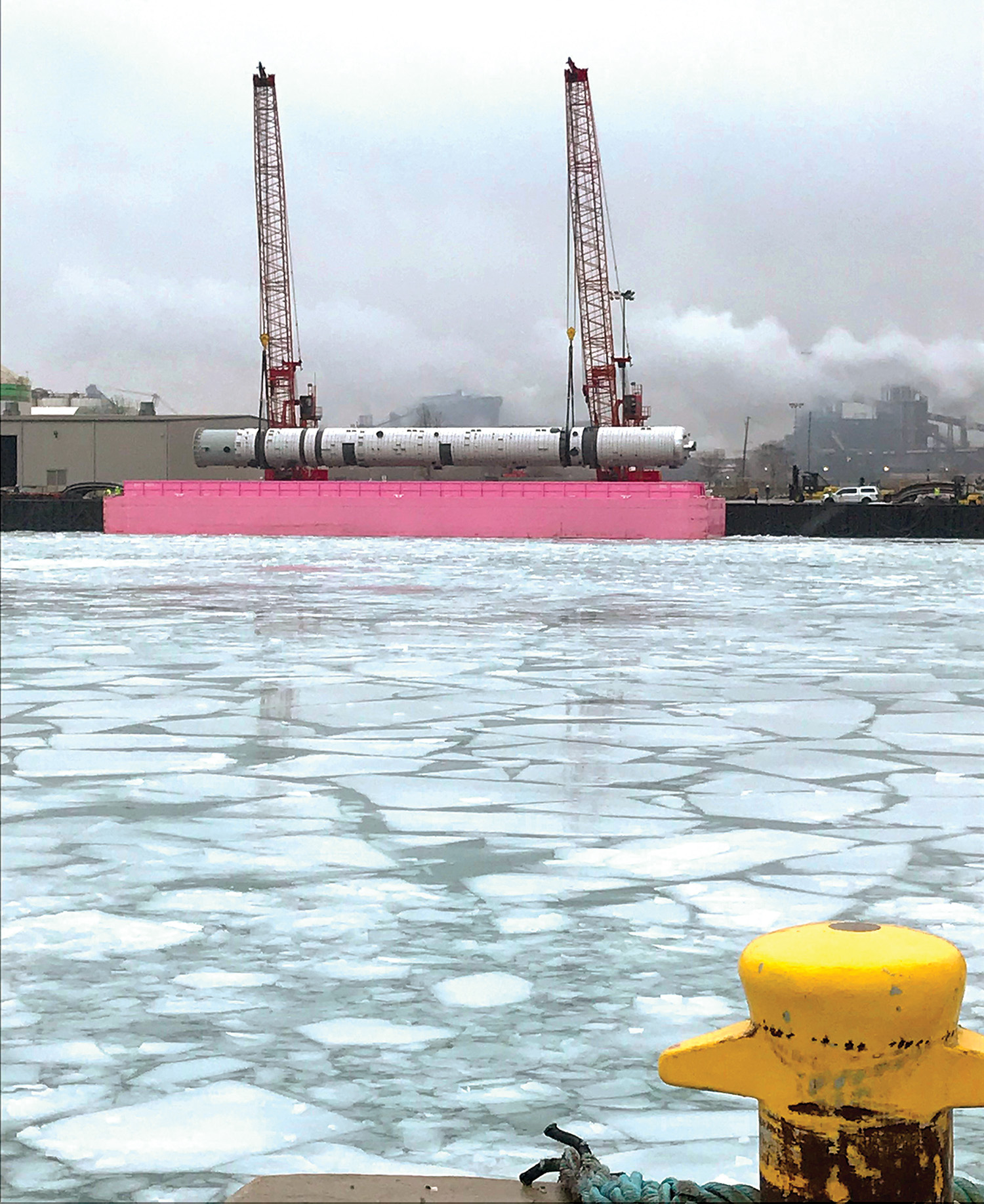The Port of Indiana-Burns Harbor welcomed Big Hope 1, the “pink barge” owned by Ceres Barge Line, for the first time February 19.
The barge’s cargo—a large coker bubble tower measuring 171 feet in length and weighing 342,000 pounds, bound for a refinery in Lima, Ohio—was unloaded by port stevedore Federal Marine Terminals (FMT). The tank traveled to Burns Harbor from the Tulsa Port of Catoosa, via the Arkansas Waterway, Mississippi River, Illinois Waterway and Lake Michigan. (Also see the WJ of January 15 for more on the move.)
Big Hope 1 has generated more than $861,000 in donations to Mary Crowley Cancer Research since its launch in 2012. The mission of Mary Crowley Cancer Research is to expand treatment options for all cancer patients through investigational vaccine, gene and cellular therapies. Ceres Barge Line employee, Vince Schu and his wife Julie, conceived Big Hope 1 to bring cancer awareness to the shipping industry as they both have family members affected by cancer.
“Big Hope 1 was built by Ceres Barge and painted pink for cancer awareness,” said Vince Schu. “She launched in 2012 from Jeffboat in Jeffersonville, Ind., after she received her pink paint, which was donated by Sherwin Williams. Since then, the barge has been traveling the inland waterways raising funds and awareness for cancer research.
“The money is used to help offset costs for patients receiving clinical testing,” he added. “The name ‘Big Hope’ was selected as most of the patients at Mary Crowley have some type of stage 4 cancer and this is their last hope for treatment. Mary Crowley Cancer Research creates a medicine based on patients’ individual DNA and cancer type. They have made great strides and with continued support may someday find a cure.”
Both FMT and the Port of Indiana-Burns Harbor contributed a portion of the revenues generated by the shipment to Mary Crowley Cancer Research.
“It’s an honor to have Big Hope 1 at our port,” said Burns Harbor Port Director Ian Hirt. “We are proud to help promote awareness and support for this important cancer research effort.”




